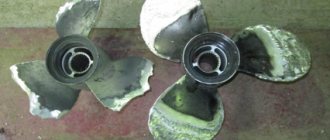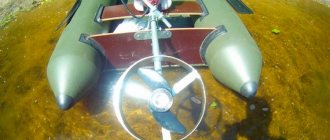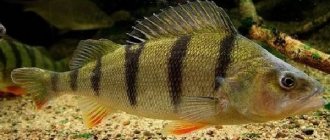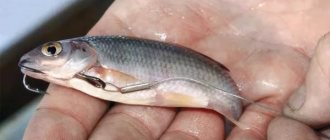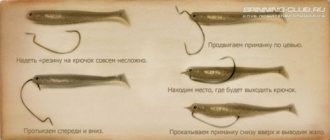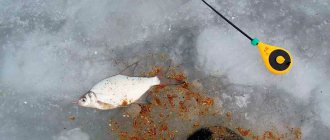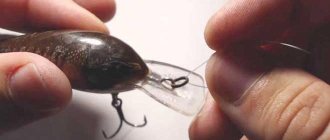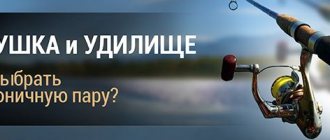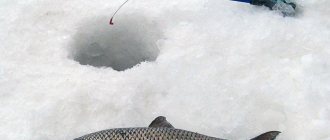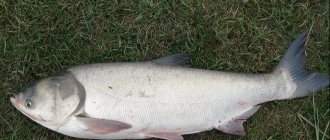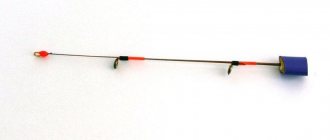There is no universal boat propeller that will fit all types of boat hulls, but there is a way to find what you need. As a rule, a properly selected propeller will allow your outboard motor to reach its maximum number of revolutions at full throttle, without under or overshooting. For example, if your outboard engine maxes out at 5000-6000 RPM, you'll need a prop that falls between 5700 and 6000 RPM. at average load in the vessel.
Be sure to consider variables such as fuel capacity, number of passengers, and the weight of all equipment including anchor, chain, battery, and so on.
When describing a propeller, both diameter and pitch are given. The diameter is indicated first, the pitch second. Screw: 12″ x 9″ has the following characteristics: diameter – 12, pitch – 9.
Step
Pitch selection is the most important parameter for determining the efficient and productive operation of the engine. Pitch is the distance (in inches) that is traveled in one complete revolution). Theoretically, a propeller with a 14-inch pitch will move the boat 14 inches per full revolution. In reality, no 14 pitch propeller will move the boat 14 inches in one full turn. This deviation is called "slippage"
How do revolutions vary with propeller pitch?
Low pitch propeller - has better acceleration and thrust
High pitch propeller - less acceleration but greater potential for achieving high speeds.
Increasing the pitch results in a decrease of 150-200 revolutions.
Reducing the pitch gives an increase of 150-200 revolutions.
The correct propeller will allow your engine to reach the maximum speed specified by the engine manufacturer. Each inch of step equals approximately 150 +/- 50 rpm.
Features of the operation of a boat motor propeller
If it happens that the data in the passport is the same, but your engine develops completely different speeds, then you can correct this situation using a screw.
If the developed speeds are significantly lower than those indicated in the passport, you need to shorten the propeller pitch. One inch decrease will result in an increase of two hundred revolutions.
If the speed is higher than the rated speed, you need to lengthen the propeller pitch, taking into account what was said earlier.
When the task is to achieve hydroplaning more quickly, or to reduce the sliding speed:
- Choose a four-bladed propeller, this will reduce engine speed
- The larger the diameter of the screw, the lower the engine speed. But it is worth considering that the boat must be powerful enough.
- For a more successful start, you should choose a ventilated propeller.
To get the highest speed:
- It would be appropriate to use ventilated polished screws made of stainless materials. It is worth considering that in this case there is the possibility of increasing the speed.
- At high speed you need to use a high efficiency propeller.
To get a more economical kit:
- You need to use a wine with a slightly larger step
- Stainless steel screw
- The developed interceptor will increase the speed at equal speeds
Number of blades
Number of boat propeller blades
Three-blade propellers are the most common and popular, as they have the highest speed and smooth operation. 4-blades have faster acceleration, better traction, smooth operation, but lower top speed than 3-blades, and 4-blades can achieve fuel economy in cruising mode.
Decoding the propeller markings.
In recent years, an increasing number of Russians have chosen active ways to spend their holidays. Hunting and fishing are traditionally considered traditional forms of active recreation in Russia. There are also extreme ways to relax in nature, such as river rafting and mountaineering.
But most city residents still gravitate toward fishing. Venerable and experienced fishermen never even think about comparing fishing from the shore and fishing using a boat. A steady increase in the incomes of a significant part of Russians has recently led to rapid growth in sales of small watercraft, motor boats and small yachts.
The discovery and introduction into mass production of new composite materials in the 60-70s of the last century led to the fact that the cost of yachts decreased by 2.5-3 times . Over the past 30-40 years, such small vessels have become affordable for a significant number of Europeans and Russians with above-average incomes.
Today, even developers, when designing country cottage villages located near rivers or lakes, strive to include the construction of boat berths and parking lots in the infrastructure. Sailing yachts are the domain of true professionals, so most consumers try to purchase yachts equipped with powerful and economical engines. Consumer preferences in this market segment among Russians belong to motors manufactured in Japan by the world famous companies Honda, Yamaha and Suzuki.
The cost of Honda motors is on average 10-15% less than the cost of its main competitors in the Russian market, with the exception of Chinese outboard motors. Since the founding of the company, Honda brand equipment has been distinguished by high efficiency indicators and inexpensive maintenance.
Most often, the propeller fails . The main reason for this is damage to the mechanical nature of its blades. This can mainly be stones and large logs.
There is no point in repairing the propeller, since even a restored propeller will significantly reduce the dynamic performance of the motor.
The best option would be to purchase a new propeller . In order to spend your own money with maximum rationality, you should know not only the main technical characteristics of the propellers, but also the markings , which encrypt the main functionality of the purchased propeller.
If you have an ordinary inflatable boat, then for use on river or lake fishing, an engine with a power of 2 to 5 horses will be enough. The Honda company marks such units as BF2 and BF5 in the technical documentation, where the numbers after the Latin letters indicate the engine power.
If the propeller of such an engine has become unusable, then when buying a new technological unit for the motor, you should know that propellers for such power units are usually marked as follows: 9 1/4x8 (3 al. R) .
This entry, which is more reminiscent of an algebraic formula, encrypts the main technical and structural characteristics of the propeller .
The number 9 ¼ means the diameter of the screw , measured in inches, an English unit of length equal to 2.5 cm in an inch.
The number 8 indicates the pitch length , the distance between the blades. Again in inches.
Further down the line, the abbreviation “3” indicates the number of blades in the propeller design. The main modifications of propellers have 3 or 4 blades in their design. A 4-bladed propeller is more powerful, and as a result, is on average 20% more expensive than a 3-bladed propeller.
Further, in the marking of propellers for motors, the buyer should pay attention to the abbreviation “al”, meaning that the propeller blades are made of aluminum . This screw is on average 10% lighter than its steel counterpart.
If the blades are made of steel, then the manufacturer indicates in the marking the abbreviated inscription “st”. Stainless steel is used to make the blades.
The Latin letters R or L will tell a potential buyer about the direction of rotation of the blades. R is right rotation, L is left rotation.
Exactly the same algorithm for deciphering propeller markings is used for propellers that are equipped with engines of higher power, 8 and 10 hp.
Sometimes the screw marking is presented as follows: 3x13.25x17R.
Everything is deciphered by analogy: 3 blades, 13.25 inches diameter, 17 inches pitch, right rotation.
That is, in the marking, the main thing is to highlight two main numbers: the diameter and pitch of the screw. Then find the number of blades, direction of rotation and propeller material.
Here is another Power-Tech screw markings
OFX4R17P-CLY200 , where
- OFX - type of blades, i.e. in this case, a High Performance Offshore series propeller with blades that help lift the bow of the boat hull out of the water, for E class engines (150 -300 hp).
- 4 – Number of blades, i.e. in this case it is a 4-bladed propeller.
- R – Direction of rotation of the screw, in this case right R. The letter L, accordingly, will indicate left rotation of the screw).
- 17 – screw pitch
- P – type of screw surface treatment (P – polished, S – matte). In this case, the screw is polished.
- CLY200 - Type of hub bushing for mounting on a motor, i.e. in this case, the letters CL abbreviate the Cushion Lok bushing for use on Yamaha V6 engines (see bushing selection table).
Interblade surface area
Interblade surface in a boat propeller
The interblade surface area refers to the total surface of the propeller blade. The larger this area, the better the emphasis and acceleration. But it can also create excess resistance on the engine and limit its speed. Insufficient interblade surface threatens cavitation and insufficient thrust.
Blade edge bend
Bend edge in boat propeller
A rake is a slight bend or protrusion on the trailing edge of a propeller blade. The “cup” allows the propeller to “grab” the water, providing excellent control in rough seas and tight turns. Also reduces ventilation and screw slippage. This will allow you to hang your engine higher on the transom. The small radius of curvature is a critical element of the propeller design, which must be precisely sized otherwise it can cause excessive steering torque, backlash and difficulty maintaining rpm.
Blade pitch angle
Propeller blade pitch angle
The blade slip angle is the angle of rotation of the blade edge relative to the base. The slip angle allows you to change the stroke and lift of your boat, as well as provide excellent stability in rough seas and when the engine is mounted high. The slip angle is expressed in degrees. A high angle is better for high-speed applications, especially with high engine mountings where there is a risk of slippage and cavitation. Helps raise the bow of the boat and reduce the wetted surface. However, for some light and fast boats, too much blade drift can make them less stable on the water, in which case it is better to choose a propeller with less blade drift. The low angle causes less load on the engine. Helps keep the bow of the boat down. It is more common and universal.
How to choose the right propeller for the motor or the benefits of tachometers
Greetings to all boaters!
In this article I want to share with you my experience in selecting the right propeller for the motor .
Consider the situation : You bought a motor and a boat, or bought a new boat, but the motor remained the same, or vice versa. So, the motor is installed on the transom, you did everything correctly: you set the desired trim angle, adjusted the immersion height of the anti-cavitation plate, but... the motor cannot bring the boat into planing mode!
What's the matter? After all, the boat and the motor seem to correspond to each other. For example, a boat with a length of 3.8 meters and a motor of 9.9 (15) hp. , but the kit does not go into planing!
The first thing you should pay attention to is the propeller parameters. Motors labeled 9.9, which are in fact 15-horsepower engines, often have an 11-pitch propeller installed. This means that the motor does not have enough power to reach its rated speed. In this case, a more traction screw is needed, with a smaller pitch - 10 or even 9 inches.
As a rule, in most cases this solves the problem of putting the boat into planing mode, but there are also more complex situations when installing a “cargo” or “high-speed” propeller is not enough.
In order to understand why the motor does not put the boat into planing mode, you need to find out what the motor itself needs (we do not consider the case when the motor clearly does not fit the boat), namely, find out at what speed the motor develops. For this you need a tachometer .
A very useful thing! In addition to the fact that you will know at what speed the engine is running, the tachometer will also show you the operating hours of your engine , since most modern tachometers for PLM are equipped with an hour meter.
So, you have installed the tachometer, chosen operating mode (for 2-stroke, 4-stroke, one/two/three-cylinder engines) and got out onto the pond. The tachometer measures revolutions over the entire operating range of the engine; all you have to do is observe its readings. Give full throttle and look: if the readings are within 5000-5500 (for some models - up to 6000, see instructions) rpm , then the motor is operating in nominal mode , there is no need to change the propeller. If the speed is less or more than the nominal speed , then you should install the screw of the required pitch!
Let's look at a few examples.
Example 1 – lack of speed . For example, the tachometer shows 4500 rpm at full throttle. This indicates that it is difficult for the motor to rotate the installed propeller . This means that this screw has too large a pitch and in one revolution it captures a large amount of water, which is very difficult for the motor to push. Therefore, it is necessary to install a propeller with a smaller pitch .
Example 2 – excess turnover . For example, the tachometer shows 6300 rpm at full throttle. This suggests that it is too easy for the motor to turn such a screw . The motor power is excessive for such a propeller; it captures very little water per revolution. This means you need to install a screw with a large pitch .
So , the operating mode is clarified, the speed is known. Which screw should I choose? There is a relative rule: 1 screw pitch – 300 revolutions.
Accordingly, at rpm, for example, 6300 , a higher-speed propeller is needed to load the motor properly! If you had a 9th pitch propeller installed and had such high speeds, then through basic mathematical calculations we find out that a 12th pitch propeller is needed .
And also vice versa. At very low speeds, reduce the propeller pitch to the required value.
Again, this formula is relative and may not be suitable in reality, since everyone’s boats and operating conditions are different!
Another important point. Don't forget that the motor must be installed correctly on the transom ! About this in the next article (Read the article “How to properly install a motor on the transom of a boat” in the “Useful Information” section of the Motorka.PRO website).
Seven feet under the keel and calm water!
Maxim Ostapenko,
Motorka.PRO.
Gear ratio
Gear ratio in a boat motor
The gear ratio is the ratio of the number of teeth on the driven gear to the number of teeth on the drive gear. The higher the gear ratio, the higher the torque, the better the engine starts, but the lower the maximum speed. With a low coefficient, it is better to bet on lighter and faster hulls. It is important to select the propeller so that it reaches the maximum speed of your engine
Ventilation
Removing air or exhaust gases from the propeller
The venting effect is when the propeller touches the air or exhaust gases. Ventilation usually causes an increase in rpm, but with a loss of speed, since the blades are in an “air pocket”. Typically, this effect occurs during tight turns, when the motor is mounted too high on the transom, or in certain water conditions (water after a storm). Some propellers are equipped with a “ventilation control system” (a hole in the propeller on the gearbox side), which helps the engine gain speed during a sharp start. The hole helps to vent air/exhaust gases through the hole. Most often, such propellers are used in two-stroke engines. They are usually not used in four-stroke engines. Ventilation is often confused with cavitation.
Boat propellers - choosing a propeller for a boat and calculation calculator
Boat propellers vary in diameter, pitch, number of blades and material from which the propeller is made. The diameter and pitch are typically stamped or cast on the side or hub of the propeller. Explanation of propeller markings: (1) Propeller diameter (in inches) (2) Propeller pitch (in inches) (3) Propeller type (brand)
Can you achieve maximum speed and maximum lifting capacity with the same propeller?
No. To achieve high speeds, a pitch or diameter is used that is unsuitable for the load capacity - where the operating conditions are completely different. If you want to get by with just one screw, then decide what is most important, and choose the screw based on that.
Which propeller is better - 3 or 4 blades?
For most boats, 3-blade propellers are recommended.
These propellers provide good acceleration and operation at main speed. A three-blade propeller has less drag and allows (theoretically) to reach higher speeds. The four-bladed one has a larger thrust; the speed with this propeller in modes from low speed to 2/3 should be higher. 4-blade propellers have a higher disc ratio and are recommended for heavier boats and boats with high-performance hulls equipped with more powerful engines. Compared to 3 blades, they perform better during acceleration, are more effective when towing skiers and skydivers, and have less vibration at high speeds.
When switching from a three-blade to a four or five-blade propeller, as a rule, engine speed is reduced by 50-100 rpm. The use of four and/or five-blade propellers compared to three-blade propellers usually results in:
- – acceleration of planing;
- – getting the boat on plane at a lower speed;
- – increasing the speed of the boat at medium engine speeds;
- – providing better acceleration compared to most three-blade propellers;
- – reduction of engine vibration;
- – improved handling in difficult weather conditions;
- – reducing the effect of ventilation during sharp turns;
- – improved handling at low speed;
- – reduction in maximum speed compared to a corresponding three-blade propeller.
For my boat there is a 13″ and 14″ diameter propeller. Is a smaller diameter with a larger pitch the same thing?
a – screw diameter; b – propeller pitch.
The pitch cannot replace the diameter. The diameter is directly related to the engine power, RPM and speed that your requirements indicate.
If operating conditions require a 13″ diameter, then installing 12″ will reduce its efficiency.
Is it necessary to use high heat to install or remove a screw?
Heat should never be used when installing a screw, and is therefore rarely required to remove it. If it is not possible to remove the screw using a soft hammer, gentle, gentle heat with a blowtorch may help. Do not use a welding torch as the fast, harsh heat will change the structure of the bronze, creating internal stresses that can cause the hub to split.
What is the advantage of using a second propeller - left rotation?
Two propellers operating in the same direction on boats (ships) create a reaction torque. In other words, the two right propellers will tilt the boat to the left. Two counter-rotating propellers on identical engines will eliminate this reaction torque, because the left propeller will balance the right one. This will result in better straight-line motion and high-speed handling. Therefore, 2 motors with propellers of different rotations are often installed.
The three most common propeller materials are composite plastic, aluminum and stainless steel.
Each has differences in price and operation.
(Bronze - usually used on slower boats and yachts.) The material of the propeller determines its use on engines of varying power. Plastic boat propellers - used on engines less than 50hp (preferably less than 20hp). Many boaters use a plastic propeller as a spare, and not as a standard one. Although they are cheaper, their effectiveness is limited by the blades sagging under load and unable to maintain their shape due to the relative weakness of the thin plastic blades. Most plastic propellers cannot be refurbished, although some blades can be purchased individually for replacement. To date, no screws have better properties than screws made of metals - a good screw should have a long service life and be repairable. So far, existing plastics are inferior in all these parameters. Aluminum propellers – most boats are equipped with aluminum propellers. Aluminum screws are relatively inexpensive, easy to repair, and can last for many years under normal conditions. Aluminum propellers are used on engines up to 150hp. Aluminum propellers are slightly more expensive than plastic, but they work more efficiently due to the reduced thickness of the blade, bend less under load, and hold the shape of the blade better. Aluminum blades with minor damage are quite repairable. Stainless steel is more expensive, but much stronger and more durable than aluminum. Stainless steel is expensive, but justifies the price because it transmits power best and with the least loss. The most versatile and expensive screws are made of stainless steel. The steel is extremely strong, allowing the blade to be as thin as possible, reducing drag in the water and, due to its strength, eliminating flex. Despite the fact that the blade is thin, it is quite durable. Steel is repairable after hitting a submerged obstacle, but there is another side to all the advantages - there is a greater likelihood of bending the shaft.
Steel propeller or aluminum
A popular topic on motorboat forums: some attribute miraculous properties to steel propellers, while others argue that they are nothing more than a shiny show-off that eventually destroys the gearbox of a boat motor.
Initially, a boat motor can be sold without a propeller at all - as a rule, these are models of medium and high power. In this case, the owner selects a propeller based on the existing boat and its needs. As a rule, a steel propeller is purchased in addition to an already existing aluminum one, which becomes a spare propeller on the boat. When purchasing a steel propeller, a vodkomotornik compares the following basic indicators:
Price
– a steel screw costs several times more than an aluminum one.
Weight
– a steel screw is several times heavier. This does not at all affect the overclocking dynamics, although such arguments are often put forward by “experts”. Fact: Racers who struggle to accelerate within a fraction of a second use steel propellers exclusively.
Bearing load
– a heavier steel propeller does not create a greater load on the propeller shaft hub bearings.
The thrust created by the propeller when moving the vodka engine amounts to tens and hundreds of kilograms - against this background, the weight of the propeller itself is almost invisible. The cause of wear on the propeller shaft bearings may most likely be an imbalance of the blades, causing vibration when the propeller rotates.
Gear load
– with a steel propeller installed, forward or reverse is activated more “hardly” than with an aluminum propeller. The gearbox of an outboard boat motor does not have a clutch or friction synchronizers - the forward and reverse gears are engaged rigidly, through a cam clutch - a “ratchet”. The “blow” when turned on is softened only by a rubber shock absorber pressed into the propeller hub. There is only one way out - the idle speed must be adjusted and be normal (usually 650–850 rpm).
Design
– the blade cross-section (thickness) of a steel propeller is twice as thin as an aluminum one. This allows for higher efficiency at high speeds.
Aluminum screws are manufactured using a simple die casting method, which imposes certain restrictions on the configuration and is not characterized by precision accuracy.
Steel screws are cast in special molds, which ensures higher precision and allows you to create almost any shape. Almost every steel screw is finished by hand. Hence the high cost and price of steel screws.
Cavitation
Cavitation in a propeller
Propeller cavitation is usually considered as a phenomenon of boiling of water in the propeller-induced flow when local pressures are reduced to saturated vapor pressure. The pressure drops so much that the water flowing around the blade boils, releasing steam bubbles. The bubbles, when bursting, create enormous local pressure, causing the surface of the blades to chip and become damaged. Propeller cavitation can be detected by the fact that the speed of the boat stops increasing, despite a further increase in the speed; At the same time, the propeller makes a specific noise, vibration is transmitted to the hull, and the boat moves irregularly. Cavitation is often confused with ventilation.
Number of blades in a boat motor propeller
The number of blades in a boat motor propeller.
There are several options for blades; the simplest are the ones with 1 blade.
You can buy them if you are not afraid of slight vibration when moving.
2-blade models create less vibration and are more efficient.
It is worth understanding that the number of blades reflects the efficiency of movement; the more there are, the smoother the operation of the device will be.
If you don’t want to spend a long time choosing and studying the number of blades, choose options with 3 blades - an excellent solution with average characteristics.
Slippage
“Slippage” in a boat propeller
The propeller slip coefficient is the percentage difference between the actual and calculated distance (propeller pitch) traveled by the propeller in one full revolution around its axis. Roughly speaking, this is how much water ran away from the blades while the propeller was making one revolution. In other words, this is a value inversely proportional to the efficiency of the screw. It slips most at low speeds - more water has time to escape from the propeller hub to the edge of the blade. Therefore, to reduce slippage, the screw diameter and/or disk ratio are increased. Accordingly, the faster the screw turns, the more water it pushes in the right direction (backward), rather than scattering it to the sides. Therefore, a propeller with a large pitch has higher efficiency. Slippage depends on many quantities: the propeller itself, the density and viscosity of the fluid, the shape of the hull, the loading of the boat, the gear ratio (which is responsible for the speed of the propeller) and other variables. Motors of different power, producing the same speed on the propeller, will show the same slip value.
If I install a high-speed propeller, the boat will go faster...
I’ll install a cargo truck and my 3-meter “swallow” will be powered by a 3.5 hp engine. It will be easy to take 4 people out on planing.
Unfortunately, these are very common misconceptions. Let's try to figure out how to choose the right screw, and in which cases it will be useful and in which it will not.
First, theses are statements of what should be.
A correctly selected propeller should enable the motor to operate in optimal mode :
in the operating speed range
produce maximum torque and, accordingly, power.
A very important point! The propeller pitch is selected for a specific boat + motor package and very much depends on the dimensions, design, weight and direct loading of the boat. On different boats, the same engine gives different dynamic performance. Therefore, it is impossible to say in advance about the required propeller pitch!
You can select the correct propeller pitch only by knowing the engine speed; it is very difficult to determine them by ear, and impossible for a beginner, therefore, you need a tachometer. And only by measuring the speed can we say that a propeller with a larger (smaller) pitch is needed.
Usually the propeller is selected based on the average, most frequently used load of the boat; not everyone will change the propeller every time, so the propeller that is optimal for this mode is selected, and in the case of a larger or smaller load, you just need to control the load on the motor due to the speed.
If the engine speed exceeds the maximum permissible “ overtorque ”, it means that the propeller is installed with a small pitch or the propeller is too “ light ”. If the motor cannot develop the maximum possible speed “ under-rotated ”, then the propeller is installed with too large a pitch; the “ heavy ” propeller is installed.
Operating the motor under “over-torque” conditions, as well as under “under-rotation” conditions, when the motor cannot develop the required speed, is extremely harmful to the motor and significantly reduces its service life. Therefore, attempts to “squeeze” out of the motor power and speed that it cannot produce by changing the propeller pitch lead to motor breakdowns.
Experiments with propellers on low-power motors up to 8-10 hp. extremely ineffective and give minimal or no positive effect! Since many low-power motors can only install a propeller with one diameter and pitch, they are trying to find non-standard propellers that can lead to serious imbalances in engine operation.
There is only one piece of advice here: if you want the boat to go faster, it is better to change not the propeller, but the motor, to a more powerful one.
Now a little theory.
Screw pitch
This is the distance in inches the screw travels in one revolution. Or the tilt of the blades. The actual distance traveled by the propeller is less than the theoretical one due to “slippage”.
Increasing the step by 1 will reduce the number of motor revolutions by 200 - 250 rpm, adding additional load to the motor. And vice versa.
Engine operating modes
Exceeding the maximum permissible speed causes enormous loads on all components of the outboard motor, the internal functioning of the lubrication mechanism, the integrity of the oil lubricating film covering the parts are disrupted, scuffing of pistons and cylinders occurs, destruction of all engine parts due to increased vibrations and beatings, this is called “peddling” operation of the motor. . (For one of the same reasons, running a boat motor in a barrel is prohibited - the engine runs without load, therefore, it can easily exceed the maximum speed).
If the engine is constantly unable to reach its recommended maximum speed, it can fail just as quickly as if it is over-torqued. Here, too, excessive loads occur on all components, overheating occurs, and there is an opinion that this contributes to the failure of electronic ignition elements. This situation arises if a weak motor is hung on a boat that is large for it and at the same time heavily loaded, or if a “heavy” propeller with a large pitch is used.
Cavitation is a process that occurs when the pressure difference on different sides of the blades increases. A strong vacuum is created on one side of the blade, which causes water to boil. When this area meets at the boundary of the blade with a high-pressure area, microexplosions occur, the strength of which is quite high. The edges of the blades become chipped, which is also called cavitation erosion. In this case, the edges of the blades with mechanical damage are further destroyed.
Cruising speed is the speed of the boat at which the lowest fuel consumption is achieved, with a slight decrease in speed relative to the maximum.
Four-blade propellers . To reduce the time the boat enters planing mode, you can use four-bladed propellers rather than three-bladed ones. At the same time, in cruising mode, the maximum speed may decrease due to increased resistance and lower efficiency relative to the three-blade one. The operation of the propeller will become smoother and less noisy. In addition, when using four blades, the phenomenon of cavitation occurs much later.
Steel propellers are the best propellers, especially for salt water. Due to the strength of steel, the thickness of the blades can be significantly reduced compared to aluminum.
With the same parameters, a steel screw has greater efficiency and you can set the screw one step larger. The motor will develop the same speed, the speed will increase, and cavitation will not cause the same damage to a steel propeller as on an aluminum one. Steel propellers have a significant drawback - they are much more expensive, and it is difficult to find such a propeller for a motor up to 10 hp. the task is not easy.
When hitting an underwater obstacle, an aluminum propeller is more destructive to the gearbox. During an impact, hard aluminum transfers all the energy to the gearbox, while steel spends part of it on its deformation. The greater weight of a steel propeller will not adversely affect the operation of the motor; the gearbox is designed for much larger loads.
Steel screws are much more durable; with critical wear, you will see small cracks, which will give you the opportunity to change the screw in time. Aluminum, having accumulated fatigue and internal damage, can fall apart immediately.
You must carefully monitor the condition of your propeller. Chips and bents introduce a serious imbalance when rotating at high speeds, cause destructive processes in the gearbox, cavitation on the blades and seriously reduce the efficiency of the motor.
For long journeys, it is advisable to have a spare propeller, especially if it is aluminum.
The thickness of the propeller blades varies from manufacturer to manufacturer. Thicker blades may have a longer service life, but worse hydrodynamic performance.
Damper - a pressed rubber bushing protects the gearbox parts from a sudden start when the gear is engaged, and does not serve to protect the gearbox from hitting an underwater obstacle. In some cases, it helps during an impact, but, more often than not, it simply does not have time to work. On low-power outboard motors, the propeller is stronger than the gearbox parts. When impacted, the shaft bends and the gear teeth are chipped. On powerful motors, gearboxes bend and break weaker propellers. Therefore, you need to very carefully monitor the depth and raise the motor in time (or switch to shallow water mode).
